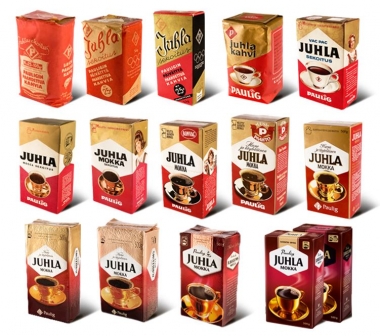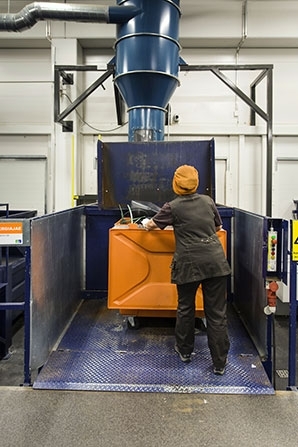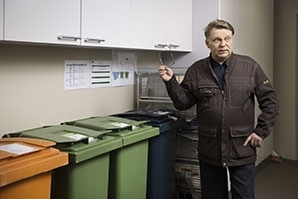Coffee needs packaging that protects it from oxygen, moisture and light, retains the flavours and aromas and can withstand transportation from the roastery to the final user. Package development is a long-term project.
Paulig is constantly seeking new environmentally-friendly alternatives for packaging coffee. There are two ways to do this: we can reduce the amount of current packaging materials or develop and adopt totally new materials that are better for the environment. Packaging product development takes time and patience as each packaging innovation can only be introduced after a year at the earliest. In order for packaging to be environmentally friendly, the reduction of the thickness of the packaging material or adoption of new materials must not reduce the quality of the coffee or adversely affect the durability of the packages. All new packaging is subject to shelf-life testing lasting several months, which ensures that the flawless quality of the coffee is maintained.
Milestones of Paulig’s coffee packaging
|
1924 |
Paulig launches the first consumer packages |
|
1929 |
Paulig’s coffees are given names |
|
1931 |
Coffee packages are given date stamps – the first in Europe |
|
1955 |
Coffee starts to be packed in airtight tins |
|
1960 |
Paulig launches the world’s first vacuum-packed coffees |
|
1995 |
Paulig gets rid of the cardboard boxes in its coffee packaging |
|
2010 |
Paulig introduces biodegradable packaging materials for commercial products as the first coffee roastery in the world to do so |
All of Paulig’s waste gets a new lease of life
As recently as the beginning of the 21st century, most of Paulig’s roastery waste ended up in a landfill site, but today under normal conditions no mixed waste is produced during the production process. Most of the waste generated is energy waste, which is recycled.
- Broken wood pallets, laminate chaff, plastic packaging, and wet or dirty paper and cardboard continue their journey, via the roastery’s energy waste compressor, to a waste disposal company to be recycled in energy production.
- Plastic and cardboard waste have their own compressors, which allows sorting and recycling of the material.
- Organic waste, such as the dust from green coffee, coffee chaff resulting from roasting and coffee residue remaining in the pipeline after the packaging process, are collected for composting into soil or compressed into briquettes.
- The offices have separate collection bins for energy waste, waste paper, office paper and paper for destruction, cardboard and organic waste.




